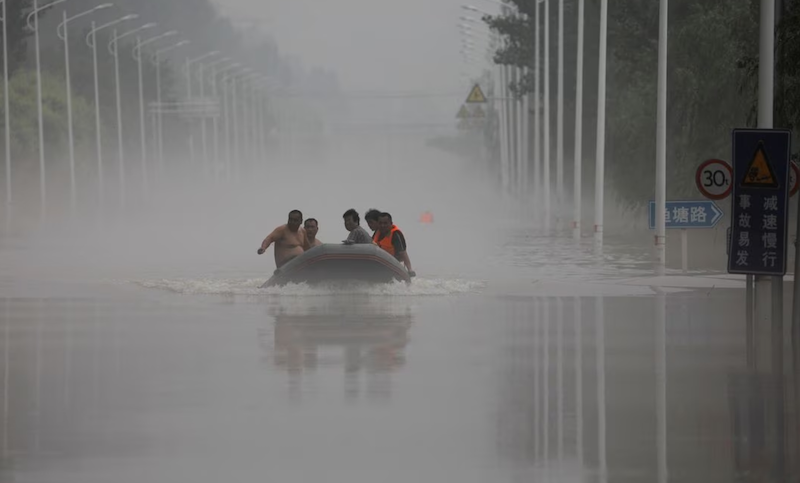China’s relief systems were struggling to cope with record rainfall in the northeast of the country on Saturday, with factories and farms flooded and tens of thousands of people evacuated.
Floodwaters from Typhoon Doksuri continued to swamp the region into the weekend, with the authorities under pressure to contain the aftermath of one of the strongest storms in years.
Almost 15,000 residents were moved out of the city of Shulan in corn-growing Jilin province, where one person was dead and four others missing, according to state media.
Also on AF: US Seen Clamping Down on Investment in China Funds
Rain has fallen continuously in Shulan since August 1, some areas getting 489mm of rainfall, five times the previous record. Bridges have collapsed and roads were damaged across the city, state media reported.
State news agency China News Service showed images of waterlogged streets around factories and homes in Shulan, a city of more than 700,000.
The record-breaking rains arrived in late July as the remnants of Typhoon Doksuri moved inland, battering northern China and causing massive floods, disrupting the lives of millions.
In Beijing, city authorities were warning of sinkholes and mudslides in the Fangshan and Mentougou outer districts of the capital.
Rainfall this past week broke many records in Beijing and northern China, with the vast Haihe river basin hit with its worst flooding since 1963.
Zhuozhou Sees 100,000 Evacuated
Floodwaters could take up to a month to recede in Hebei province, a water resources department official told state media.
Zhuozhou southwest of Beijing is the hardest hit city in Hebei province, with about 100,000 people – a sixth of its population – evacuated.
On Saturday, water reached warning levels and continued to rise on the Muling river in northeast China’s Heilongjiang province, known as the nation’s “great northern granary”, the provincial hydrology office said.
China has long been aware of urban waterlogging risks, with rapid development creating metropolitan sprawls that cover flood plains with concrete. Extreme weather driven by global warming is making it worse.
The impact of typhoons is rare in China’s northeast, with most typhoons moving away west or northwest after making landfall in China, Chinese meteorological experts say.
- Reuters with additional editing by Sean O’Meara
Read more:
Taiwan Shuts Schools, Stock Market as Typhoon Khanun Closes In
Beijing, Northern China Counts Cost as Typhoon Doksuri Kills 20
Typhoon Doksuri Lands on China Coast, Downs Power Lines
China, Taiwan Braced as Super Typhoon Doksuri Heads For Land
























